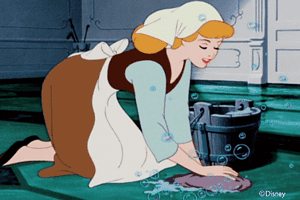From an evolutionary psychology stand-point, one can genuinely assume that a stepparent won’t invest the same amounts of energy and care for their wards as genetic parents often do. This behavior may in some cases turn to an extreme, especially if a new child is born in the family after a stepparent enters the scene, leaving the children from the previous communion exposed to abuse and exploitation. This is often referred to a the “Cinderella effect”, and psychologists have often resorted to evolutionary hypotheses (non-biological children are seen as competition to their own children of the same blood by stepparents and thus disfavor them in order to increase the chance of passing their genes) to explain this behavior.
A new research by scientists at the Max Planck Institute for Demographic Research (MPIDR) in Rostock, Germany and University of Montreal, Canada have found that parental care depends on more than just the biological relationship. Apparently, wealth in the family has a major role to play.

The researchers took a leap back in time and analyzed family records from the 17th to 19th century in two economically discrepant areas: the Krummhörn region of East Frisia (Germany), which was a densely populated area with little space for economic development, and the growing Canadian settlements in Québec. The scientists looked at the mortality rates of children growing in patchwork families in the two settlements, in order to calculate how their chances of survival changed when a stepmother was introduced.
Stepparents: evil?
Thanks to the advent of modern technology, especially in the health and medicine sector, life expectancy all around the world has greatly increased with respect to previous centuries. For instance, life expectancy in the US in 1900 or just a century ago was 49, while today the average baby born in this country will live to 78. Anyway, you can imagine mortality was even higher further back in the 17th or 19th century, and many children would die very young. When a stepmother or stepfather would come in, things would change for the worse for the children leftover from the previous marriage or so the general accepted theory goes.

At a first glace, this is very true. If a Krummhörn girl lost her mother early, the likelihood of her dying before the age of 15 more than doubled compared to a girl whose mother did not die. This makes sense, since the mother was in charge of caring for children and their good health especially considering the father was away all day at work. If the father remarried and the stepmother joined the family, however, mortality doubled again. So it made little difference for the children if a stepmother was introduced, it was as if they had no mother of any kind. Québec, however, the risk of dying young barely changed when the new mother moved in.
“The stepmothers in Québec seemed to understand that the offspring from their husband’s first marriage were not competition for their own children with their new husband,” says MPIDR researcher Kai Willführ.
In fact, the Canadian half siblings were considered to be allies of the biological children. On the contrary, according to the “Cinderella effect”, stepparents would always consider foreign children to be competitors to their own children and thus neglect them. Indeed, this was what happened in Krummhörn where competition among siblings for basic needs was fierce.
“We assume that stepmothers neglected, exploited or even abused the children from their husband’s first marriage,” says socio-biologist Willführ.
Parents commit a huge amount of time, attention and material resources to the care of their children, as well as incurring life-threatening risks to defend them and bodily depletion to nourish them. Why are parents motivated to invest so heavily in their children? From an evolutionary perspective, the answer is surely that natural selection has favoured intensive parental care in our lineage. Those ancestral genotypes and phenotypes that best succeeded in raising children to become reproducing adults were the ones that persisted and proliferated. From this perspective, care of young who are not the caretaker’s own requires explanation.
A stepchild must rarely have been as valuable to a stepparent’s expected fitness as a child of one’s own would be, and we may therefore anticipate that stepparents will not, in general, feel such whole-hearted, self-sacrificial love for their wards as genetic parents so often do. This most severe category of child maltreatment exhibits Cinderella effects of the greatest magnitude: in several countries, stepparents beat very young children to death at per capita rates that are more than
100 times higher than the corresponding rates for genetic parents.
What the two studies show, however, that evolutionary standpoints aren’t the only or even the major factors at play governing child survival rates in patchwork families. Context makes all the difference in the world, apparently, and whether there’s room for economical development or not greatly influences how parents allocate their affection to their own children and stepchildren.
What about stepparents today? There’s a sort of belief that generally stepparents aren’t nearly as affectionate to their non-biological children as they could where these their blood children. Surely, today children and stepparents don’t need to compete for basic needs like food and shelter, but in their hearts do stepparents resent these children as if it were 19th century Krummhörn?
“It is therefore also true today, that stepparents are not always evil,” says researcher Kai Willführ.
The work was reported in the journal “Biodemography and Social Biology.”


